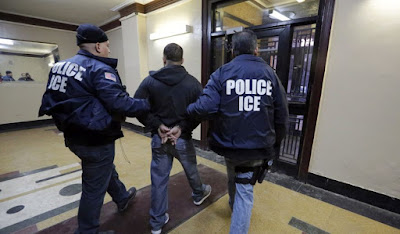My brother, who is from El Salvador, was recently picked up by ICE. He has no papers in this country, and is young and unmarried. We expect he will have to go back to our country, but how quickly will this happen?
Answer:
Even if it is true that your brother has no choice but to leave the U.S., how soon this happens depends on a number of factors, such as:
can simply act on that previous order of removal and send him back to El Salvador
right away.
•How long he has been in the United States. If it is for fewer than two years,
he may be subject to “expedited removal,” meaning that he can be deported
very quickly without a hearing before an immigration judge. If, on the other hand,
he has been in the U.S. for ten or more years, has been of good moral character,
and can show that his deportation would cause “exceptional and extremely unusual
hardship” to a qualifying relative(s) who is (or are) U.S. citizens or lawful permanent
residents, he may qualify for “cancellation of removal” or a green card.
•How far from the U.S. border he was when picked up. If he was within 100 miles,
and cannot show that he entered the U.S. more than less than 14 days before the
arrest date, he may also be subject to expedited removal, and will not
receive a hearing.
•Whether he fears persecution or torture in El Salvador. If so, he might avoid
the effects of expedited removal, and be able to present a case for asylum,
withholding of removal, or Convention Against Torture relief before an immigration
judge. See “Asylum & Refugee Status” for more information on this.
•Whether he would prefer to leave voluntarily, without the hassle of further proceedings.
See “Voluntary Departure: Who Is Eligible?” for more information on this option,
which avoids the effects of a removal order, such as a long-term bar to future U.S.
immigration.
•Whether he is placed into removal proceedings before an immigration judge. If so,
see “Judge's Decision in Immigration Court: How Long It Will Take to Get” for
further analysis of the likely timing. As you can see, dealing with deportation
proceedings is a highly complex area of immigration law, and getting your brother
in contact with an experienced immigration attorney would be well worth your while.




You do have some possible ways to stay in the U.S. after your J-1 residency is done. If you qualify for another type of temporary visa, such as “O” (for persons with extraordinary abilities), you can stay in the U.S. under the terms of that visa.
Also, it is possible to ask the U.S. government not to apply the two-year home return requirement to you. There are four different types of “waivers” of the two-year home return requirement that medical residents on a J-1 visa can get. If the government grants you a waiver, you can apply for any kind of permanent or temporary visa or status to extend your stay.
First, you can get a waiver if a U.S. federal government agency requests that you be allowed to stay. (The agency might want you to work there.) Second, you will not have to go back to your home country if you can show that you would face persecution there. Third, you won’t have to leave the U.S. if doing so would cause exceptional hardship to a spouse or child who is a U.S. citizen or U.S. legal permanent resident.
Finally, the two-year home return requirement can be avoided if you get what is known as a “Conrad 30” waiver. These are available only if a U.S. state requests one on your behalf and your home country doesn’t object. The waiver will be granted, and you’ll be given an “H-1B” visa, only if you agree to work full-time in the public interest at a health facility or health care organization for at least three years, usually in a part of the state that has a shortage of doctors. Each state can give out only 30 of these waivers per year.